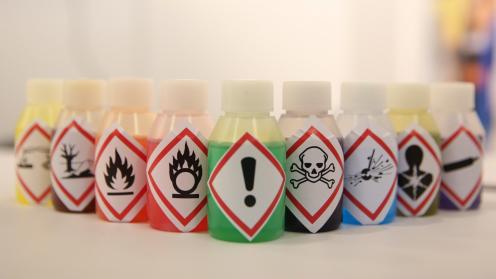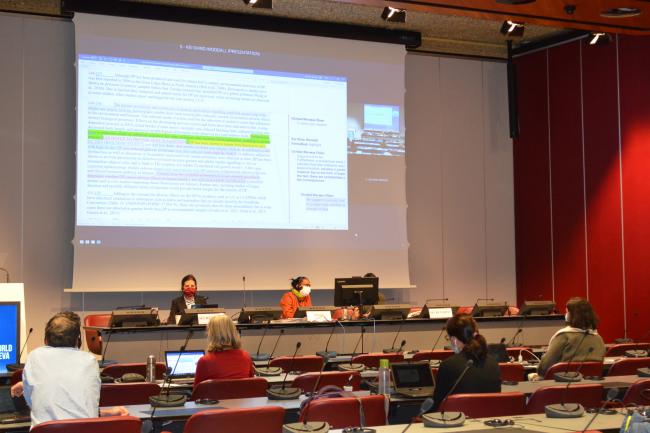POPRC participants worked in small groups to conduct detailed reviews of nearly all chemicals on the agenda for this meeting.
Wednesday started with good news. The previous day’s work on methoxychlor yielded agreement on the revised draft risk management evaluation and the draft decision. If the decision is adopted by all members, the next step would be for the Stockholm Convention parties to decide if methoxychlor production and use should be eliminated or restricted.
Members and observers scrutinized the information on chemicals that could be persistent organic pollutants (POPs). This is a two-stage process. The first stage involves reviewing notifications from countries that have concerns about a chemical. POPRC-17 members considered three chemicals at this stage:
- Chlorpyrifos (an insecticide);
- Chlorinated paraffins with carbon chain lengths in the range C14-17 and chlorination levels at or exceeding 45% chlorine by weight, which are used as flame retardants and plasticizers in plastics, as well as lubricants and coolants for metal forming operations; and
- Long-chain perfluorocarboxylic acids, their salts and related compounds, which are used in a range of products, such as coating products, fabric/carpet protectors, fire-fighting foams, automotive care products, and cosmetics.
The next stage of scrutiny is a more in-depth look at the information related to these chemicals to ensure they meet the criteria listed in the Convention. On Wednesday, both chemicals at this stage were considered: Dechlorane Plus (a flame retardant) and UV-328 (a stabilizer used in plastics and other products).
Dechlorane Plus conversations moved smoothly, although outstanding questions remain, including on whether there is sufficient evidence of significant adverse effects. In the UV-328 discussions, conversations focused on whether plastics can be a mode of transporting UV-328 to remote regions, both scientifically and under the Convention. Such long-range environmental transport is a requirement for a chemical to be listed under the Convention.
To receive free coverage of global environmental events delivered to your inbox, subscribe to the ENB Update newsletter.





